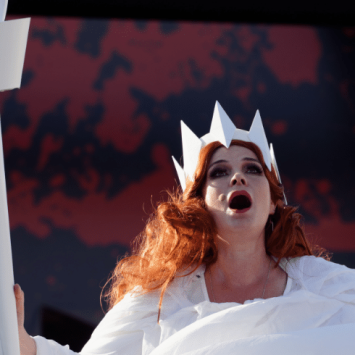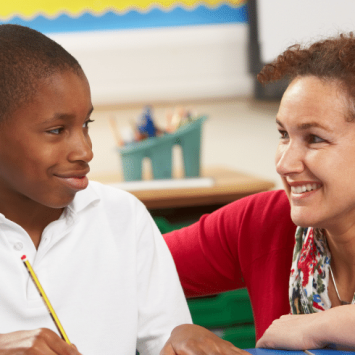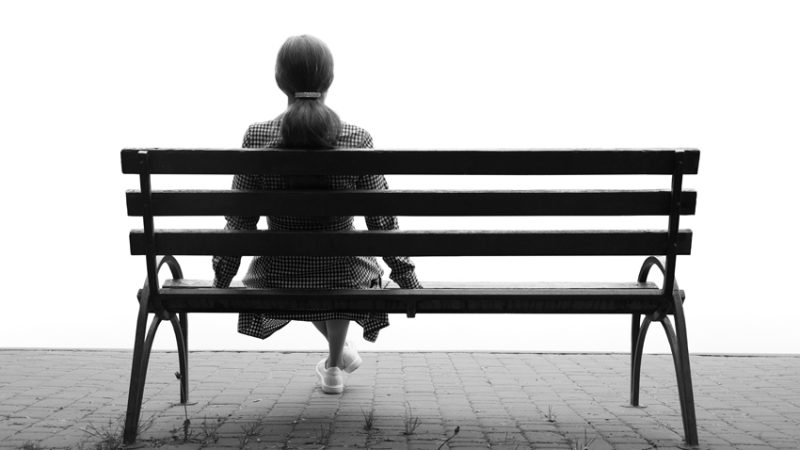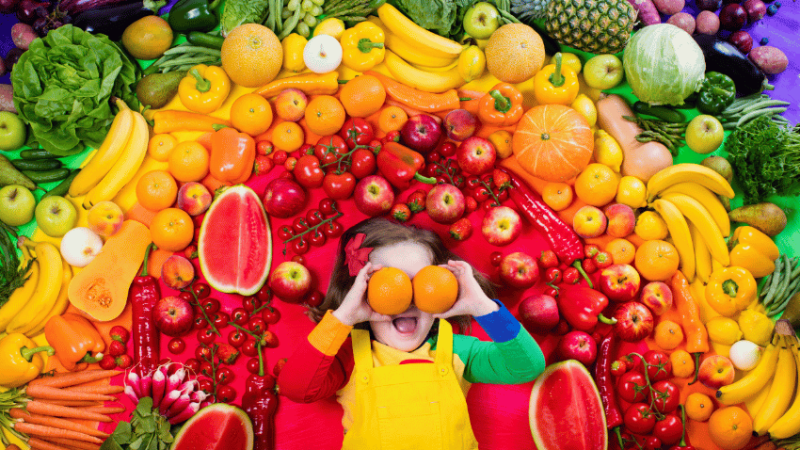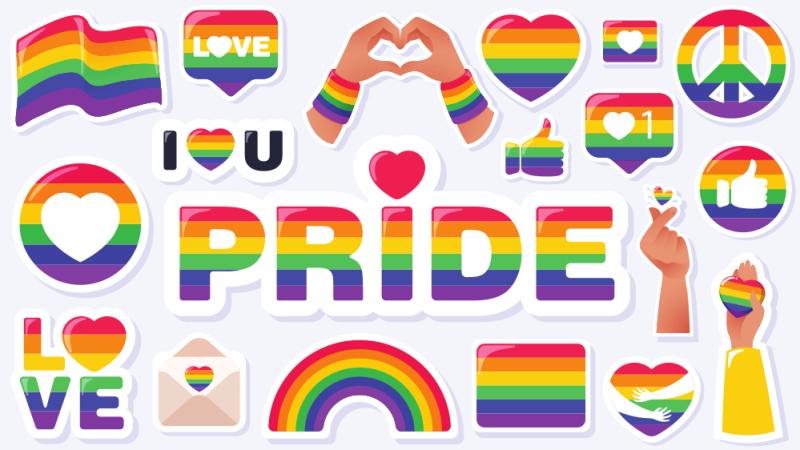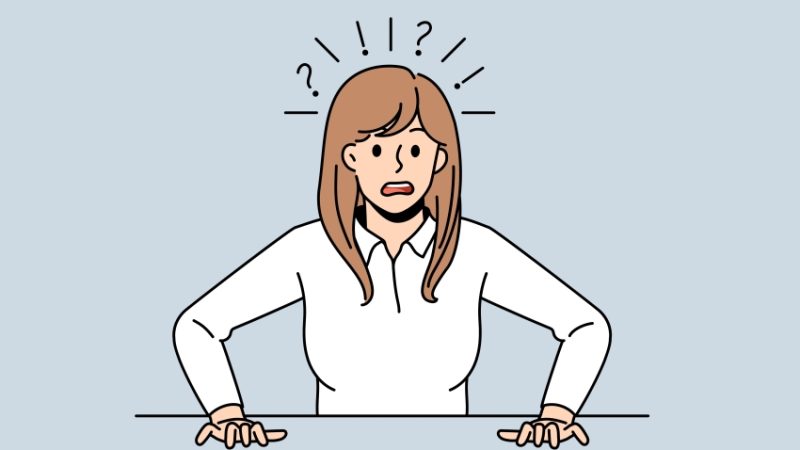LGBT History Month 2023 – 20+ great teaching resources for primary and secondary this February

February is Lesbian, Gay, Bisexual, Trans History Month so we’ve rounded up some great resources and reference sites for you to educate and celebrate…
- by Teachwire

When is LGBT+ History Month?
LGBT History Month takes place every February.
What is LGBT+ History Month?
The overall aim of LGBT+ History month is to promote equality and diversity. The theme in 2023 is Behind the Lens – concentrating on LGBT+ people’s contributions to cinema from behind the camera.
This year the charity is encouraging people to look ‘behind the lens’ and listen to LGBT+ peoples’ lived experiences.

On the LGBT+ History Month website you’ll find downloadable primary and secondary activity packs.
Glossary of terms

Promote shared understanding and mutual respect by helping staff get to grips with these simple, universal terms for trans and gender questioning individuals.
Educational Action Challenging Homophobia (EACH) created the glossary, which features clear definitions for 13 gender identity and sexuality terms.
Free primary LGBT+ History Month resources

LGBT+ young people’s charity Just Like Us has created free downloadable profiles of historical icons.
Suitable for KS1 and KS2, they cover a range of people, including lesbian astronaut Sally Ride, transgender pilot Roberta Cowell, bisexual singer Josephine Baker and gay artist Keith Haring.
British Army LGBTQ+ resources

Help secondary students aged 11–16 build their understanding of the LGBTQ+ community with these resources all about the contributions of LGBTQ+ Army personnel past and present.
LGBTQ+ Voices – The Army Today from Army Jobs on Vimeo.
In the pack you’ll find an assembly and lesson plan. The assembly profiles six LGBTQ+ service people from the First and Second World Wars. There’s also video reflections from current LGBTQ+ Army personnel.
Families KS2 discussion and writing pack
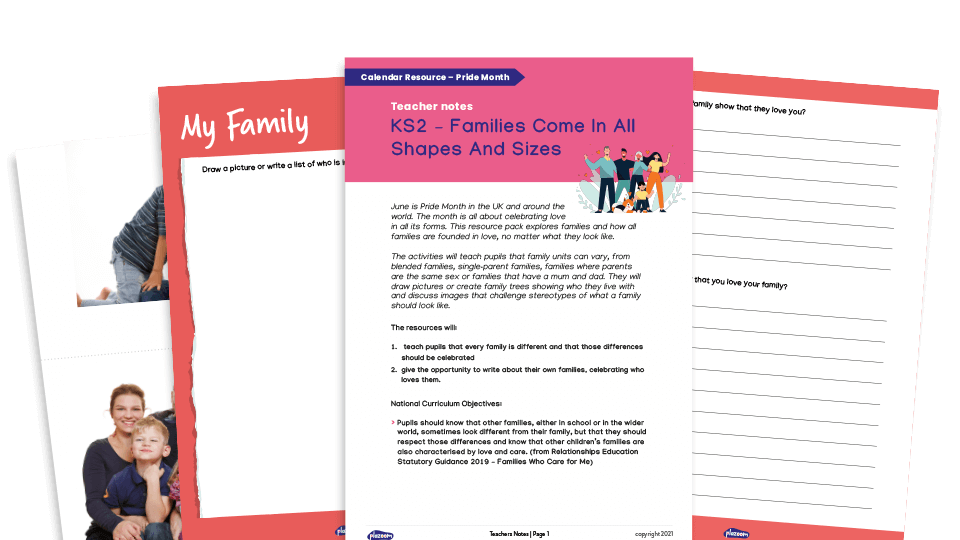
Explore how all families are founded in love, no matter what they look like, with this KS2 resource pack from Plazoom.
The activities will teach pupils that family units can vary. This includes blended and single-parent families, families where parents are the same sex or that have a mum and dad.
Pupils will draw pictures or create family trees showing who they live with and discuss images that challenge stereotypes of what a family should look like.
The Proud Trust
Happily Ever After 2017 from Action Transport Theatre on Vimeo.
The Proud Trust is a charity providing education, support and advocacy for LGBT+ young people and their communities.
In its primary education toolkit you’ll find Happily Ever After. This is a KS2 resource that explores same gender relationships and equal marriage.
Also on offer for UKS2 is a Trans Positive Education for Primary Schools Pack. It consists of five resourced lessons that can be delivered as part of a PSHE KS2 programme.

Every year, The Proud Trust creates a resource pack for LGBT+ History Month. Download the free pack for 2023 as well as packs from previous years.
LGBT-inclusive primary curriculum

Whether you’re just getting started on LGBT+ inclusion or developing your best practice even further, this free Stonewall guide can help.
You may also find these guides to working with parents useful. These resources for framing inclusion through rights and schools with faith values are also extremely helpful.
5 books to support LGBTQ+ diversity in primary schools
Reading material in your school library should reflect everyone’s reality. Here, teacher and English consultant Ian Eagleton suggests books that will help you to rejoice in love in all its forms…
As a young gay man, I struggled to find books that I could truly identify with. I wanted to read something that highlighted my experiences and made me feel less alone.
This has made me aware of how important it is to have books in school that mirror everyone’s realities.
None of the books chosen here aim to indoctrinate children into the LGBTQ+ community, but simply rejoice in love in all its different forms by recognising, normalising and honouring every relationship.
It is of course vital you read these books before sharing them with your class and ensure they are appropriate and suitable for your children.
But if teachers can sensitively direct children’s reading then they will have the compassion and understanding they need to challenge inequality and replace the ‘what is’ with ‘what ifs’ and ‘what could be’.
Emmett and Caleb

Emmett and Caleb explores the relationship between the two main characters as they journey through birthdays, hard times and the beauty of the changing seasons.
The two friends share precious moments together such as watching a stunning sunset or waving goodbye to summer as autumnal leaves fall.
Their relationship is never defined, leaving it open to interpretation, but it’s lovely to share in their quiet, tender friendship.
Julian is a Mermaid

Julian’s life is changed when he sees three enthralling women dressed as mermaids. Swishes of coral blue and intricately illustrated underwater scenes depict Julian’s daydream of becoming a mermaid.
When Nana sees Julian proudly transformed into his version of a mermaid, the empty space surrounding him and Nana’s furious face suggest a devastating reaction.
Many children will recognise the notions of rejection and invisibility, but Nana gifts Julian a pearl necklace to complete his glamorous outfit.
They join a procession of mermaids “like you, honey” and a riot of colour reflects Julian’s feelings of joy as he finds his true place in the world.
Red: A Crayon’s Story

Red crayon is not very good at being red. Every time he tries to draw strawberries, hearts and cherries, everything turns out blue!
His teacher thinks he needs more practice, his parents feel he needs to mix with other colours and many berate him for his lack of effort – after all, his label says ‘red’ and that’s the way he came from the factory!
Eventually, a new friend offers Red the chance to be himself and Red discovers that he is, of course, Blue!
A colourful, charming, witty picture book about the damage of forcing labels onto others and the freedom and delight that being yourself brings.
Heather Has Two Mommies

Heather Has Two Mummies was first published in 1989. While many lesbian mums were thrilled to see themselves in a children’s book, there were a number of people who were disgusted by the inclusion of a different family unit.
The book is a colourful, gentle exploration of what it means to be a family.
Heather and her two mums picnic, play and bake together. When Ms Molly asks the class to paint a picture of their families, we see, through beautiful, child-like watercolour illustrations, how different every family is.
It’s a message that still needs to be acknowledged.
Jerome By Heart

This vivid picture book shows us the beauty of true friendship and the feeling of safety it engenders.
Told simply in the first person, young Raphael shares with us his feelings of tender affection for his best friend, Jerome.
With echoes of Walt Whitman’s We Two Boys Together Clinging and Josh Gilgun’s The Way They Are, the book sensitively considers how the day-to-day rhythm of life can be enriched by love.
Despite his parents’ disapproval, the story ends on a life-affirming note. Raphael’s spirit cannot be vanquished and the boys’ love remains “strong as a fortress”.
Why inclusive education is vital

Most people (sadly, not everyone) know that it’s important for children to learn about LGBTIQ+ issues and identities. We can always learn more, though, and improve what we pass on to children. These expert opinion pieces are a great place to start.
First Amie Taylor explains why LGBTQ+ resources for primary schools are vital, and how her teachers weren’t allowed to talk about same-sex relationships and so she didn’t even realise she was gay.
Simon James Green explains why books containing portrayals of LGBTQ+ characters deserve a place in every school.
If you’re looking to expand your school library, Barbara Band picks out 10 inclusive, empowering and empathetic reads.
Nicola Adams KS1 reading and writing resources pack

Introduce KS1 pupils to sportswoman Nicola Adams, using this KS1 resources pack from Plazoom. It looks at her achievements and how she is an inspirational person within and beyond the LBGTQ+ community.
Pupils will have the opportunity to develop comprehension skills using the questions linked to the biographical text about the boxer. They’ll also consider how she has inspired others.
Children will go on to discuss who inspires them, with opportunities to write about who is inspirational in their own lives.
How to make your school LGBTIQ+ inclusive

So, how exactly can you improve the culture of your school to be more inclusive? There are, of course, many ways, as covered by the following brilliant articles.
Elly Barnes argues that true LGBT+ inclusivity means more than a few rainbow posters along school corridors, and starts with a serious commitment to training.
Dr Anna Llewellyn explains that if we want true LGBT+ inclusivity in schools, we need to address our heteronormative society.
Andrew Coe talks about bringing LGBTIQ+ role models into the classroom.
Shaun Dellenty argues that you should make every month LGBT+ History Month, by using February as the jewel in your crown to showcase the amazing work you do each and every day, all year round.
Explore LGBT+ History Month through film

Into Film invites schools to host a themed assembly this February. Use movies like The Imitation Game, Carol and Milk as the centre of lessons on PSHE, SMSC and citizenship.
Schools Out resources

If you’re after advice on things like tackling homophobic bullying or how to use language effectively then Schools Out has a whole host of resources for you to use. Check out the full selection.
Gender identity lesson plans for primary school

The Gender Identity Research and Education Society has produced two different age-related lesson plans on gender identity for primary school. There’s one for ages 3-6, and one for 7-11.
Browse more similar resources themed around Pride Month 2023.

